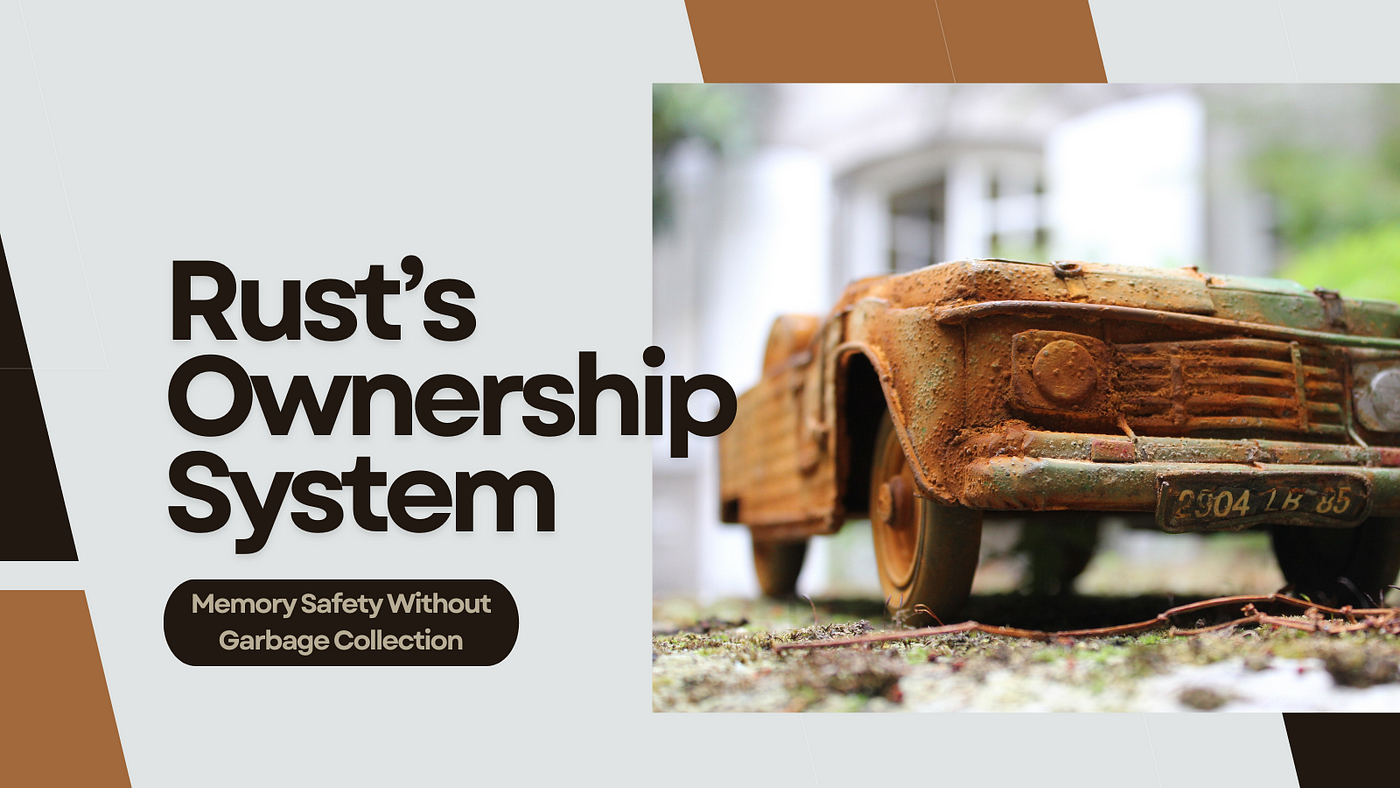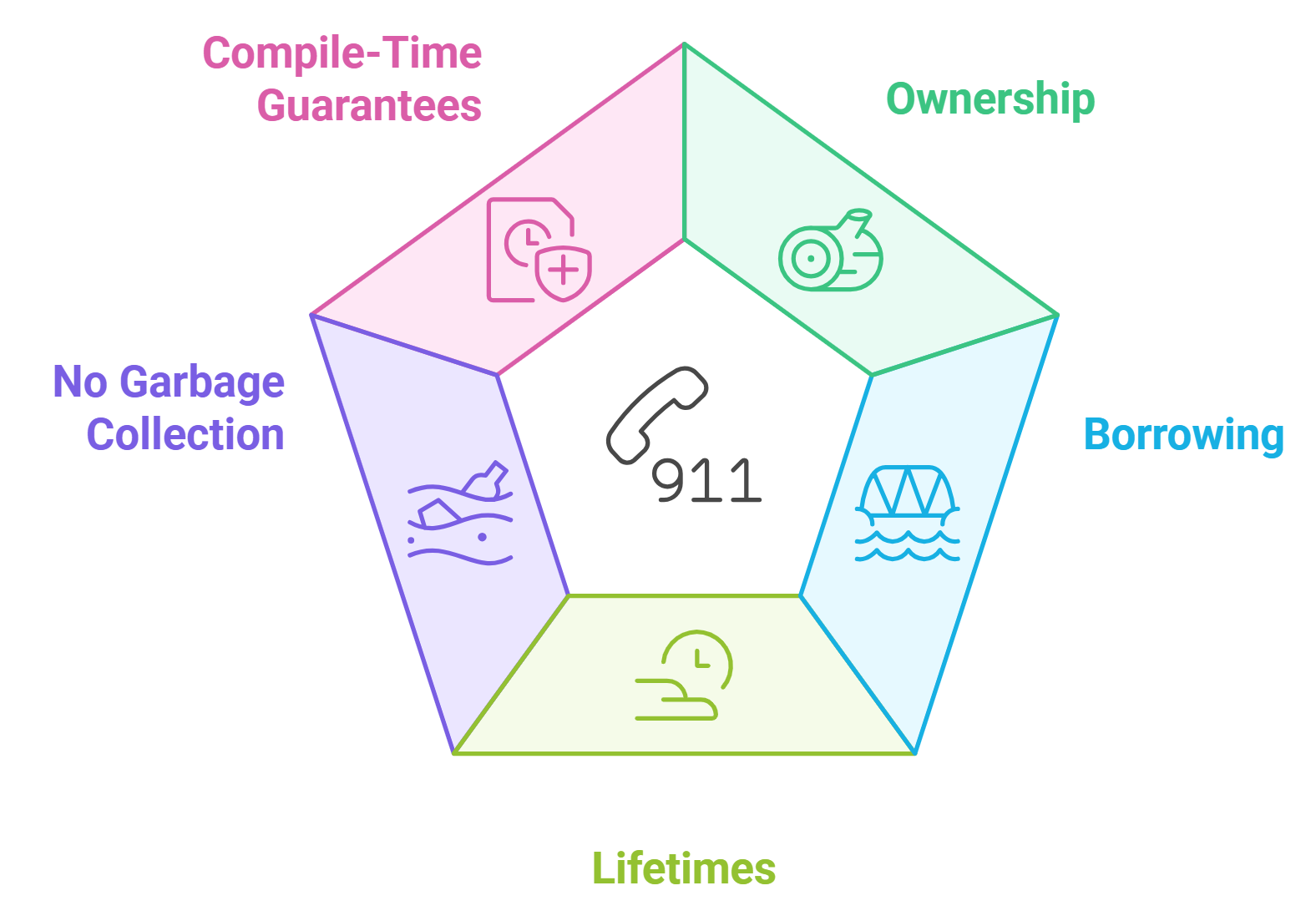- Published on
Rust's Ownership Model Memory Safety Without Garbage Collection
- Authors

- Name
- Adil ABBADI
Introduction
Memory management is a crucial aspect of systems programming, and Rust has taken a bold approach to tackle this challenge. Unlike languages that rely on garbage collection, Rust's ownership model provides memory safety guarantees without the need for runtime garbage collection. In this blog post, we'll delve into the details of Rust's ownership model, exploring how it works and why it's a game-changer for systems programming.

- The Problem with Garbage Collection
- Rust's Ownership Model: A Different Approach
- Benefits of Rust's Ownership Model
- Conclusion
- Ready to Dive Deeper into Rust's Ownership Model?
The Problem with Garbage Collection
Garbage collection is a common technique used by languages like Java, Python, and C# to manage memory. While it provides a convenient way to allocate and deallocate memory, it comes with significant performance and reliability drawbacks. Garbage collection can introduce pauses in the program, affecting responsiveness and throughput. Moreover, it can lead to memory leaks, causing programs to consume excessive memory.
Rust's Ownership Model: A Different Approach
Rust's ownership model is based on the concept of ownership, borrowing, and lifetimes. This innovative approach ensures memory safety without relying on garbage collection. Here's a breakdown of the key components:
Ownership
In Rust, every value has an owner that is responsible for managing its memory. When a value is created, it is bound to a specific scope, and its owner is the variable that holds it. The owner is responsible for ensuring the value is valid and accessible within its scope.
Borrowing
Rust introduces two types of borrowing: shared borrowing and mutable borrowing. Shared borrowing allows multiple references to access a value without modifying it, while mutable borrowing allows a single reference to modify the value.

Lifetimes
Lifetimes are annotations that indicate the scope for which a reference is valid. Rust uses lifetimes to ensure that references do not outlive their owners. By specifying lifetimes, developers can guarantee memory safety and prevent common errors like dangling pointers.
Rules of Ownership
Rust enforces three rules to ensure memory safety:
- Each value in Rust has an owner.
- There can be only one mutable reference to a value in a given scope.
- A value can have multiple shared references, but only if there are no mutable references.
By following these rules, Rust's ownership model prevents common memory errors like null pointer dereferences, data races, and dangling pointers.
Benefits of Rust's Ownership Model
Rust's ownership model provides several benefits, including:
Memory Safety
Rust's ownership model ensures memory safety without relying on garbage collection. This means that programmers can focus on writing efficient and reliable code without worrying about memory-related errors.
Performance
By eliminating the need for garbage collection, Rust's ownership model allows for more predictable and efficient performance. Programs can run faster and with lower latency, making Rust an attractive choice for systems programming.
Reliability
Rust's ownership model helps prevent common memory errors, making it easier to write reliable and fault-tolerant code. This is particularly important in systems programming, where reliability and stability are crucial.
Conclusion
Rust's ownership model is a innovative approach to memory management that provides memory safety guarantees without relying on garbage collection. By understanding the concepts of ownership, borrowing, and lifetimes, developers can write efficient, reliable, and fault-tolerant code that takes advantage of Rust's unique features. Whether you're building systems software, operating systems, or high-performance applications, Rust's ownership model makes it an attractive choice for systems programming.
Ready to Dive Deeper into Rust's Ownership Model?
Start exploring Rust's ownership model and discover how it can help you write more efficient and reliable code. Download the Rust Book and start learning today!
